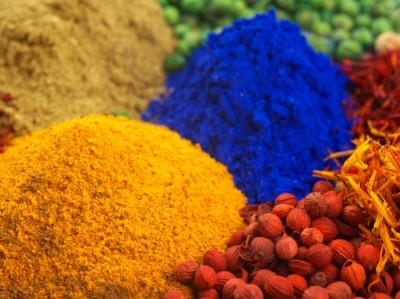How the colour of packaging changes the flavour of a food

Eating is a multisensory experience and the shape, smell and colour of a food, its packaging, and even the setting in which it is eaten, can affect the way it tastes. Red foods are associated with a sweet taste and green with sour.
These taste associations can also vary depending on the product category. For instance, consumers expect beverages wrapped in green to have a lemon or lime flavour while sweets wrapped in the same colour are expected to have a mint flavour.
The interaction between the five senses can sometimes have unexpected consequences for manufactuerers.
In 2012, UK confectionery maker Cadbury changed the shape of its Dairy Milk chocolate bars and received an onslaught of complaints from consumers about its new recipe was not as good as the original.
In fact, Cadbury had not altered the recipe in any way but the different shape impacted the way the chocolate tasted.
That's a wrap
In this study, researchers from the US university of Montclair wanted to determine the effect of wrapper colour on candy flavour expectations and perceptions.
The participants were given pieces of metallic foil in different colours - red, green, orange, and purple/pink (called ‘wildberry’ by the manufacturer) – and then answered questions on their flavour associations for confectionery and for beverages.
The most common flavour expectation for the red paper was cherry (75%), for the green paper it was mint (74%), for the orange paper it was orange (56%) and for the purple/pink paper it was grape (44%).
Importantly, they found that the colour of the wrapper did not affect how much subjects liked the flavour of the candy nor the rated intensity of the flavour or sweetness. All colours were judged to be, at best, “somewhat appropriate”.
Participants in the study were more likely to report the confectionery as having a flavour that was consistent with the colour of the candy than with the colour of the paper it was wrapped in.
“This suggests that people’s judgments and evaluations of a food stimulus is most strongly influenced by those aspects of the stimulus they perceive as being an integral part of the food,” write the researchers.
In other words, the colour of the food rather than the colour of the packaging is more important.
“It appears that consumers attempt to integrate the various sensory characteristics of the actual product, including colour, taste, and odour, into an overall sensory experience that makes sense of those characteristics,” they conclude.
“However, expectations produced by the packaging, which is not an integral part of the product, can easily be dismissed if information from that source does not agree with the sensory experience of the product.
Future work should investigate the strength of the expectations produced by packaging and colour on overall expectations and flavour perception in other food products, they suggest.
Source: Food Quality and Preferences
"The effect of wrapper color on candy flavor expectations and perceptions”
Available online ahead of print, 24 February 2018, doi.org/10.1016/j.foodqual.2018.02.011
Authors: Debra Zellner, Nancy Greene, Monica Jimenez, Arturo Calderona, Yaritza Diaz, Mimi Sheraton



















